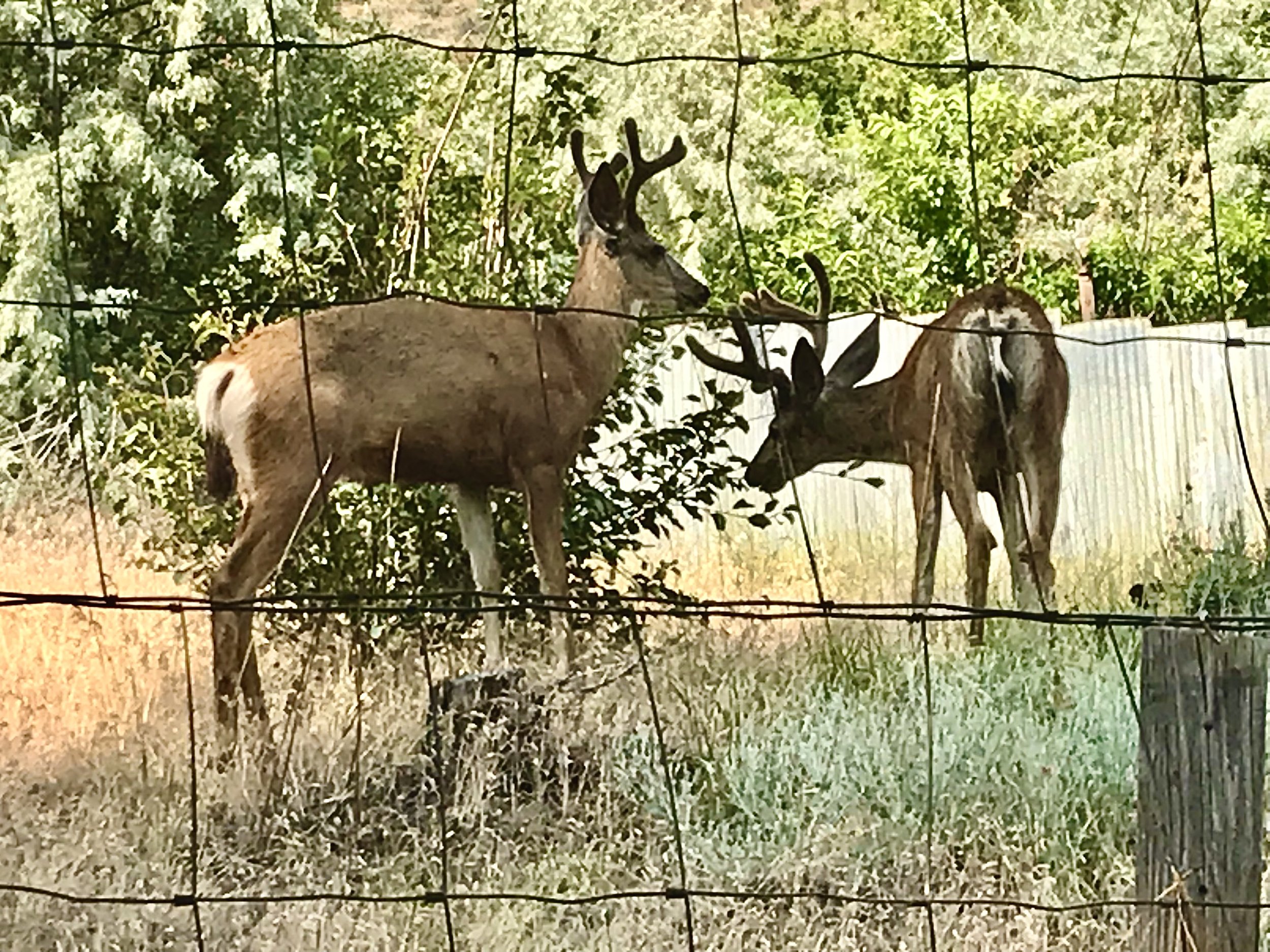
Protecting Your Garden from Wildlife
Creating a thriving garden in the Inland Northwest is a joy—but the presence of deer, mice, and voles can quickly turn that joy into frustration. If you’re wondering how to protect your garden from wildlife, especially in rural or semi-rural areas, these practices will help you establish a resilient landscape that coexists with nature.
Deer Protection for New Plantings
Deer are some of the most persistent visitors to home gardens. They are especially attracted to newly planted vegetation and are quick to find anything fresh, tender, and unprotected. In areas with frequent deer activity, it’s essential to:
• Cage young plants and trees for the first 2–5 years.
• Use fencing 4–6 feet high to deter browsing.
• Wrap trunks to protect against antler rubbing in fall, which often kills young trees. This step is not necessary if your plants are already caged.
• Protect conifers in winter, when food is scarce and deer become less selective.
Training deer to avoid your plants early on can be surprisingly effective. If a plant is protected while it’s getting established, deer may lose interest entirely—even after the protection is removed.
Vole and Mouse Damage: Prevention Tips
Unlike deer, voles and mice cause damage from the ground down. These underground pests chew bark, roots, and stems at the base of trees and shrubs, especially over winter when food sources are limited.
To prevent vole and mouse damage:
Wrap trunks with plastic tree guards in winter, especially on fruit trees.
Keep grass mowed short around plantings to expose vole tunnels and reduce cover.
Avoid baiting, which can harm natural predators like hawks and owls.
Water moderately to discourage easy tunneling in dry, loose soils.
Line planting holes with hardware cloth to block access to roots.
Some gardeners have had success planting species less attractive to voles, such as those with milky sap or bitter-tasting foliage.
Wildlife-Proof Landscaping: Work with Nature
Protecting your garden from wildlife isn’t just about defense—it’s about planning. This is where the principle of right plant, right place matters most.
Support local fruit growers if you are in bear country.
Consider cold sinks and wind-prone areas when siting plants.
Choose drought-tolerant species if you’re limiting irrigation.
Space trees properly to avoid future overcrowding and removal.
Look beyond flowers—focusing on foliage, form, bark, and seedheads for long-term impact.
The Methow Valley and Inland Northwest are filled with microclimates and diverse terrain. While USDA zone hardiness is helpful, it’s not the whole story. Know your land. And as we often say—pay fierce attention.
Let’s Grow Together!
Have questions? Ask away. Whether you’re unsure about soil prep, staking, compost choices, or plant selection — we love to share our gardening insights.


